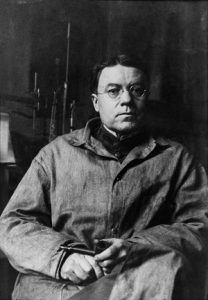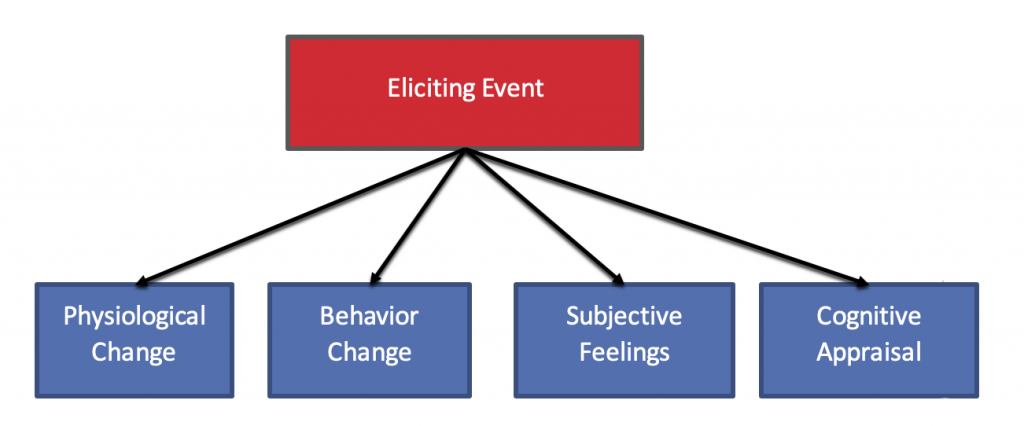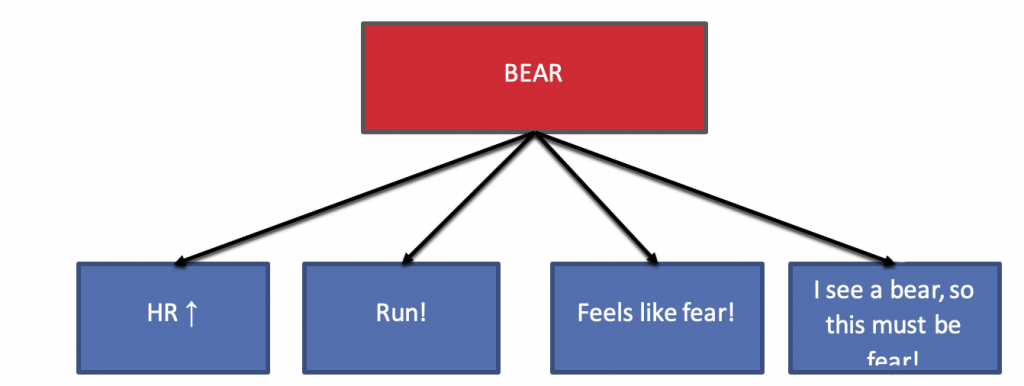Chapter 2: Classical Theories of Emotion
Cannon-Bard Theory

Credit: Portrait of Walter Bradford Cannon, seated, wearing lab coat. Credit: Wellcome Collection. Attribution 4.0 International (CC BY 4.0)
Walter Cannon (1927) and Philip Bard (1934) developed another theory on emotion. In 1900, Walter Cannon received his medical degree from Harvard Medical School. During his time in medical school, Cannon utilized x-rays to enhance his understanding of the digestive system. After medical school, Cannon was hired an in instructor of physiology in the Department of Physiology at Harvard Medical School. He was quickly promoted to an Assistant Professor, and eventually became the chairman of the Department of Physiology in 1906. Cannon is known for discovering homeostasis and the sympathetic nervous system and for labeling the fear response “fight-or-flight.” For more information about Cannon, visit this website.
Archibald “Philip” Bard received an undergraduate degree in biology from Princeton University (he had to request an exception to attend the university because married undergraduates were forbidden, and Bard was already married!). After graduating with Honors, he was admitted to a doctoral program in physiology at Harvard Medical School, under the supervision of Cannon. From there, he held professorships at Princeton, Johns Hopkins, and Harvard. Bard was credited with linking the central nervous system to sexual behaviors, for identifying functions of the hypothalamus, and for determining that removing the cerebral cortex in cats increased the cats’ tendency to anger, a process he called “sham rage” (Harrison, 1997).
Cannon-Bard Theory began with the work of Cannon. He identified several problems with James-Lange Theory (Cannon, 1927; see prior section on strengths and weaknesses of James-Lange Theory). In his experiments on cats and other animals, Cannon witnessed emotional responses even though the brain could no longer communicate with the body (see Bard’s sham rage findings above). These findings directly contradicted James-Lange, who suggested that information about physiological and behavior changes was quickly sent to the brain for processing. Cannon’s thesis was that for several different discrete emotions, animals and people show the same bodily changes. For example, when your heart is racing you may be experiencing fear, anger, or joy. This means that the brain cannot use only our bodily change to identify the emotion label – something else must tell us whether we are fearful, angry, or joyful. Together, Cannon and Bard conducted experiments to test their theory. Through their research, Cannon and Bard concluded that the body is not required to experience an emotion. Thus, for Cannon and Bard, changes in physiology, behavior, subjective feelings, and cognitive appraisal occur separately, but simultaneously. Separate means the presence of each component does not influence the other components. So, an increase in heart rate doesn’t influence our subjective feelings. This contrasts with James-Lange who said both physiological and behavior changes determined our subjective feelings. Simultaneous means after the eliciting event occurs, all four components change at the same time. Again, this differs from James-Lange who suggested physiological and behavior changes occurred first, following by quick cognitive appraisals, and then followed by subjective feelings and slow cognitive appraisals.
Figure 2
Model of Cannon-Bard Theory

Long Description
The image displays a flowchart composed of a red rectangle at the top labeled “Eliciting Event,” which connects via black arrows to four blue rectangles below. The blue rectangles are labeled “Physiological Change,” “Behavior Change,” “Subjective Feelings,” and “Cognitive Appraisal.” The arrows indicate a flow from the central event at the top to the four outcomes below.
Figure 3
Model of Cannon-Bard Theory with Bear as Eliciting Event

Long Description
The image is a flowchart with a central red rectangle labeled “BEAR.” Four arrows lead from this rectangle to four blue rectangles below. Each blue rectangle contains different text. The arrows are black and point in a downward direction, connecting the top rectangle to each of the lower rectangles.
Strengths and Weakness of Cannon-Bard Theory
A major strength of Cannon-Bard is that their theory was tested through experiments with animals. A second strength is that Cannon-Bard were the first theorists to clearly identify the importance of cognitive appraisals.
Yet, unlike James-Lange Theory, Cannon-Bard did not discuss the differences between quick and slow cognitive appraisals. They also did not consider whether certain emotion components occur earlier in time – for instance subjective feelings should occur later in the episode because these represent our consciously reported feelings. Finally, a large amount of evidence contradicts Cannon-Bard Theory. Today, we know that a sudden event can quickly elicit physiological and behavior changes before we consciously process emotional experience. For instance, a gunshot would likely quickly increase our heartrate before we can identify the eliciting event or the emotion label.

